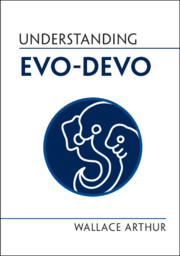Book contents
- Understanding Evo-Devo
- Series page
- Understanding Evo-Devo
- Copyright page
- Reviews
- Dedication
- Contents
- Foreword
- Preface
- Acknowledgements
- 1 What is Evo-Devo and Why is it Important?
- 2 Antecedents of Evo-Devo
- 3 Evolutionary and Developmental Essentials
- 4 Evo-Devo Essentials
- 5 The Evolution of Variations on a Theme
- 6 The Evolutionary Origins of Themes and Novelties
- 7 The Evolutionary Origins of Body Plans
- 8 Body-Plan Features and Toolkit Genes
- 9 Bringing It All Together
- Concluding Remarks
- Summary of Common Misunderstandings
- References
- Figure Credits
- Index
7 - The Evolutionary Origins of Body Plans
Published online by Cambridge University Press: 29 April 2021
- Understanding Evo-Devo
- Series page
- Understanding Evo-Devo
- Copyright page
- Reviews
- Dedication
- Contents
- Foreword
- Preface
- Acknowledgements
- 1 What is Evo-Devo and Why is it Important?
- 2 Antecedents of Evo-Devo
- 3 Evolutionary and Developmental Essentials
- 4 Evo-Devo Essentials
- 5 The Evolution of Variations on a Theme
- 6 The Evolutionary Origins of Themes and Novelties
- 7 The Evolutionary Origins of Body Plans
- 8 Body-Plan Features and Toolkit Genes
- 9 Bringing It All Together
- Concluding Remarks
- Summary of Common Misunderstandings
- References
- Figure Credits
- Index
Summary
It is constructive to approach this issue from a historical perspective. Some aspects of animal relatedness have been known for a long time – centuries – while some have only been established in the last few decades. And others remain to be worked out or confirmed. A useful starting point for this historical approach is the 1817 four-volume work Le Règne Animal (The Animal Kingdom) by the French comparative anatomist Georges Cuvier, who divided the kingdom into four embranchements (branches): vertebrates, molluscs, articulates (outwardly segmented animals), and radiates (radially symmetrical animals). We should note here that Cuvier was an anti-evolutionist; he was opposed to the evolutionary theories of his fellow Frenchmen Jean-Baptiste Lamarck and Étienne Geoffroy Saint-Hilaire, and he did not live to see the publication of Darwin’s Origin of Species. However, many non-evolutionists prior to Darwin (from Aristotle onwards) made good attempts at the classification of animals, even though the fruits of their labours would not be given an evolutionary interpretation until later. Here, I will discuss Cuvier’s suggested groups as being evolutionary ones, even though that is not how he saw them.
Keywords
- Type
- Chapter
- Information
- Understanding Evo-Devo , pp. 114 - 130Publisher: Cambridge University PressPrint publication year: 2021

